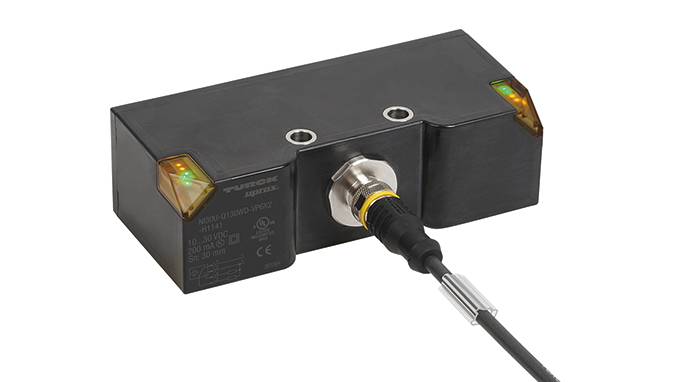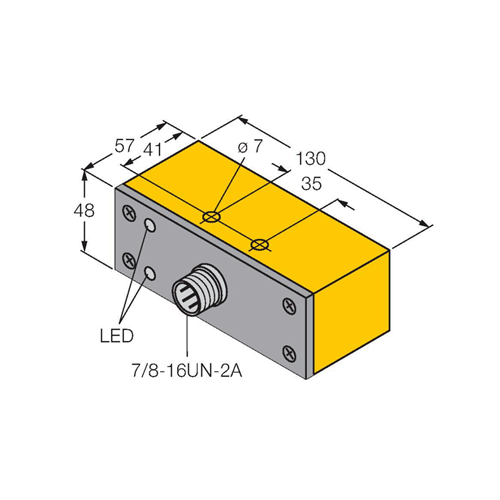Shop by Category
Turck Q130WD Inductive Proximity Sensor
New inductive proximity sensor improves reliability of high-speed can detection

To improve metal can detection in food and beverage applications, Turck announces its new Q130WD inductive proximity sensor. This non-contact solution is specifically designed for sensing metallic targets on high-speed food and beverage lines. With a switching frequency of 250 Hz, it can detect up to 900,000 cans per hour, ensuring maximum throughput.
Inductive sensors are commonly used to avoid production errors on bottling and canning lines and conveyors by ensuring there are no gaps in the line or counting cans before they enter the infeed of the filler. Turck’s Q130WD sensors feature Uprox® Factor 1 technology that senses all metals at the same range. This improves flexibility and reduces costs because no sensing changeover is needed when a different type of metal can is introduced.
The rectangular housing is made from FDA-approved plastics specified in accordance with IP68/IP69K ratings for washdown, and is resistant to all common alkaline and acidic detergents.
High-visibility corner LEDs let users know at a glance that the sensor is operating correctly. At 44 mm high, the device fits better between aluminum rails and can be installed flush so it does not protrude onto the line. Laser engraving ensures better, longer-lasting legibility that pad printing, even after high-pressure cleaning.
.png)

.png)
